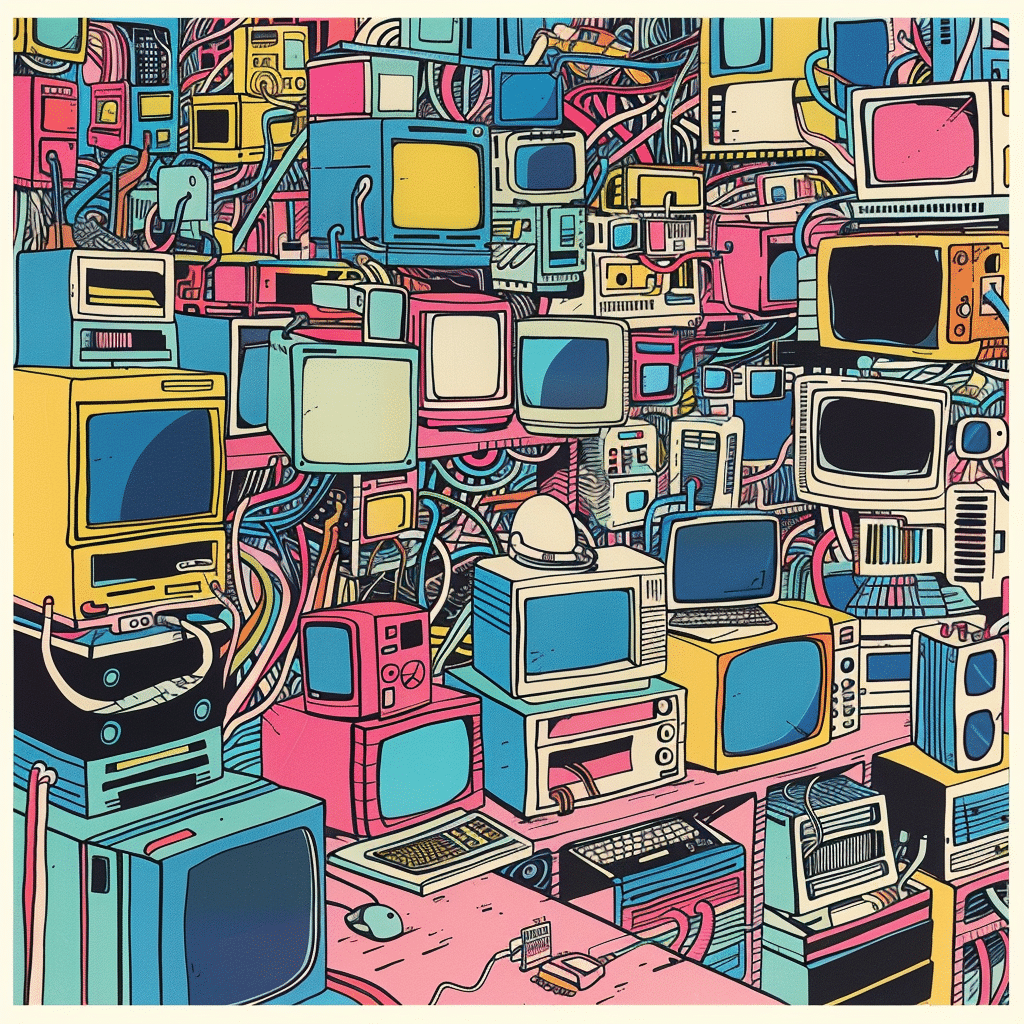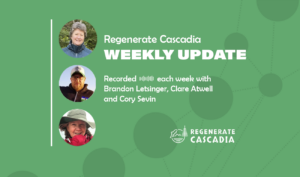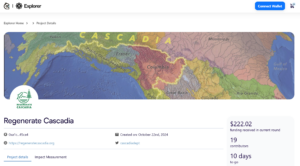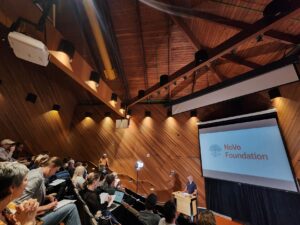During the website meeting, we discussed several different things, including the primary purpose of the website, the potential for exploring other networks, and Paule’s beginning to conduct a User Research Plan to be followed up with a broader Technology Research survey to create a more easily accessible site map, website and digital ecosystem.
SCHEDULING ANNOUNCEMENT: Website meetings will once again become weekly and will be shifted to 11am to better fit schedules with the learning journey.
User Research Plan
Once testing is complete, the study owner will analyze the data gathered and report out on the following:
- Potential key pain points discovered
- Recommendations for improvements
- Written report on findings
- Optional: a “read-out” presentation on Zoom to cover findings and do a Q&A
Subsequent work will enable
- Clarity and documentation for user role types (proposed for the first phase: members, stewards, admin)
- Improvements to the Regenerate Cascadia website
- Improvements to communication channels and providing insight into the “community gardener” role
Methodology
- 45-minute interview sessions, to be conducted with 5-8 key Regenerate Cascadia people on Zoom
- All interview sessions will be conducted via Zoom and recorded. Session transcripts will be analyzed and tagged for analysis and data patterns.
Website and Digital Platform Purpose
The Regenerate Cascadia is a digital platform and website that we are building to help serve the Regenerate Cascadia directly.
- Information for the General Public (General Public)
- Be able to effectively learn about
- Regenerate Cascadia: Who, What, Where, Why
- Cascadia: Vision/Movement, Bioregion, Identity
- Bioregionalism & Bioregional Mapping
- Movement Archive: Be able to clearly and easily see Recent Events and Blog Post Reportbacks
- Be able to effectively learn about
- Guilds
- Hubs
- Projects
- Guilds
- Media Center: Be able to effectively to see original:
- Email & In print newsletter (Cascadia Spoke)
- Announcements
- Articles
- Podcasts
- Videos.
- A shared Bioregional Learning Center
- Bioregional Atlas and layered GIS web app.
- Have a Directory of Organizations about specific Topics, and Locations.
- Resource Library: External Resources & Assets: Learning resources people want to share, that is not their own original creation, but that could be helpful for RC regenerators.
- Information Commons : tracking information about a place. Planetary thresholds, bioregional frameworks. etc.
- Have a public facing specific “Page” for Hubs, Guilds, Projects, BLC’s & BLS’s and directory. People can make donations directly, and point to blog posts, events, resources, organizations, the inner group.
- Easy access and ways to get involved.
- Ability for people to make donations or become members.
- Online store.
- Be able to effectively learn about
- Organizers Tools and Ways to Connect (Organizational + Organizers)
- Tools for “Stewards” to add events to the calendar
- Tools for “Stewards” to create Learndash Courses
- Tools for “Stewards” to add reportbacks to the blog
- Tools for “Stewards” to add announcements to the blog
- Tools for “Stewards” to add resources & organizations
- Be able to register for classes.
- Tools for Groups to steward their own page
- Tools for Groups to steward their own website
- Tools for Groups to steward their own backend buddyboss group
- Tools for Groups to manage their own donations
- Tools for Groups to track their own expenses, submit payment requests, manage their own budget.
- Information for Grant applications and partners.
- Groups manage their email list.
- An Online Network of Regenerators (Personal)
- Dashboard for easy access to information
- “Mobile App” for notifications and messaging interactions.
- Ability for people to
- Connect to each other
- directly message each other
- Have and manage their own profile.
- get involved with groups they care about and empower their own work.
- Submit to shared resources, an organization they are connected with.
- Submit events to the community calendar, with approval.
- Manage their own payment details and information for donations.
- Media Center: Be able to effectively to add original Announcements, Articles, Podcasts, Videos. i.e. media center + spoke.
- Information gets added to a movement map? Kumu / WP Directory Map
Future studies
Tech/methodologies
Potential participants: Steven Morris, Shari Herndon, Robert Bunge, Frank Sanborn, Clare Atwell, Brandon Letsinger, Brian Kerkvliet, Julie Wolf, etc
Purpose:
- Capture knowledge from other projects and methodologies that RC community members have found useful
- Use findings to improve and streamline RC processes and tools
- Convey that we are listening to our community wisdom
- Sharable templates
- Social media component – based around topics & locations
- Email lists and management
- Admin and levels of support for tech/email lists
Hylo:
- Created by the Terran Collective/ Clare Pollitano/ Tibet Sprage/Edward West
- It looks like a designer went to town on it – Paule
Mighty Networks
- is closed, needs lots of curating
Weave / Holochain
- Are there any other communication platforms or methods that you’d like Regenerate Cascadia to use, and why? What would these help you accomplish?
AI Meeting Summary
May 21, 2024 10:00 AM Pacific Time (US and Canada) Quick recap
The team deliberated on the Regenerate Cascadia project, emphasizing the importance of a public interface, organizer tools, and social media integration. They also discussed the potential of user experience, the role of guilds in community involvement, and the significance of term limits and knowledge transfer in community organizations. Lastly, they planned for a bioregional mapping project, a centralized data collection and aggregation system, and the management of a shared document, agreeing to revert to weekly meetings and the potential for a tutorial or demo as a separate module.Next steps
Regenerate Cascadia Project Goals and Challenges
Brandon outlined the main goals for the Regenerate Cascadia project, emphasizing the importance of a public interface, organizer tools, and social media integration. The team discussed challenges with the Silo platform and proposed solutions to improve functionality and user experience. The need for a data collection and tracking system for regional scales was also discussed, along with the importance of controlling the use of the organization’s name and establishing a grievance process. Additionally, the potential of using maps for correlating and visualizing activity was explored, and the role of guilds in managing community involvement was considered.
Term Limits, Knowledge Transfer, and Interviews
Clare and Paulé discussed the importance of term limits and knowledge transfer in community organizations to prevent stagnation and ensure a diverse range of perspectives. They agreed on the need for a core backbone organization to support emergent groups while staying flexible and responsive. The conversation also touched on the planning of interviews with key members of the Regenerate Cascadia project, including potential changes to the document and the selection of interviewees. They considered the inclusion of individuals with varying viewpoints and experiences, such as Sherry, Jan, and Steven Mars.
Tech Methodology Study and Interview Questions
Paulé presented a tech methodology study and discussed potential questions for an interview focusing on user experience and future communication platforms. Clare and Tanja provided feedback, suggesting questions about the main goals of Regenerate Cascadia and the functionality of the website, with a focus on information access and event functionality. The team decided to refine their questions to explore user experiences and challenges in more detail, focusing on the Telegram platform, and to simplify the interview process by removing unnecessary tools. The team also discussed ways to improve the Telegram platform based on user feedback, and the possibility of using a tool like Miro for an ‘affinity exercise’ to group and synthesize user comments.
Bioregional Mapping Project Discussion
Paulé, Brandon, and Clare discussed the creation of a bioregional mapping project for the Guild. Brandon proposed the idea of developing a web app that includes a media center for sharing announcements, articles, and videos, as well as a resource library for external sources and learning assets. Paulé and Clare agreed, with Paulé noting the importance of incorporating original content into the media center. The team decided to explore this idea in future discussions further.
Centralized Data Collection and Aggregation System
Paulé, Brandon, and Clare discussed the need for a centralized data collection and aggregation system. Clare raised concerns about the current lack of such a system, and Brandon confirmed that they had partnered with Aquilla Flowers to develop a similar tool. The team also discussed the importance of a website structure to display necessary information, with Paulé suggesting a prioritization process for website features. Brandon outlined the back-end architecture and proposed a vision of a movement website that gives stewards autonomy, while Clare highlighted the potential for certain groups to leverage the system effectively. Lastly, the concept of a Cause platform was discussed, with Brandon sharing his ideas and the team considering different user perspectives.
Document Management, Accessibility, and Meetings
Paulé, Clare, and Brandon discussed the management and accessibility of a document stored in Paulé’s personal drive, the need for clear organization and access levels, and the process for setting up new email addresses for group access. They also discussed the importance of the right people being involved in decision-making processes, the value of user research and user experience, and the potential of guilds to create a more organized structure for discussing and implementing ideas. Lastly, they agreed to revert to weekly meetings, with the possibility of a tutorial or demo as a separate module, and Clare committed to updating the meeting dates for the Advisory Council and the website.





